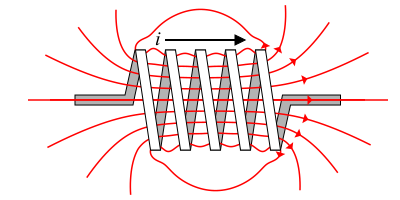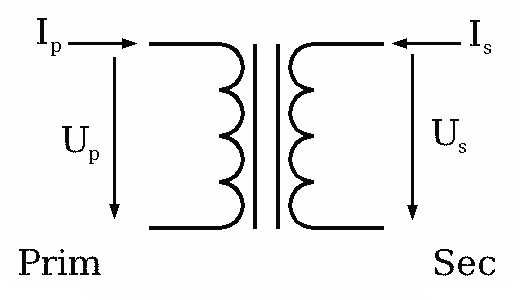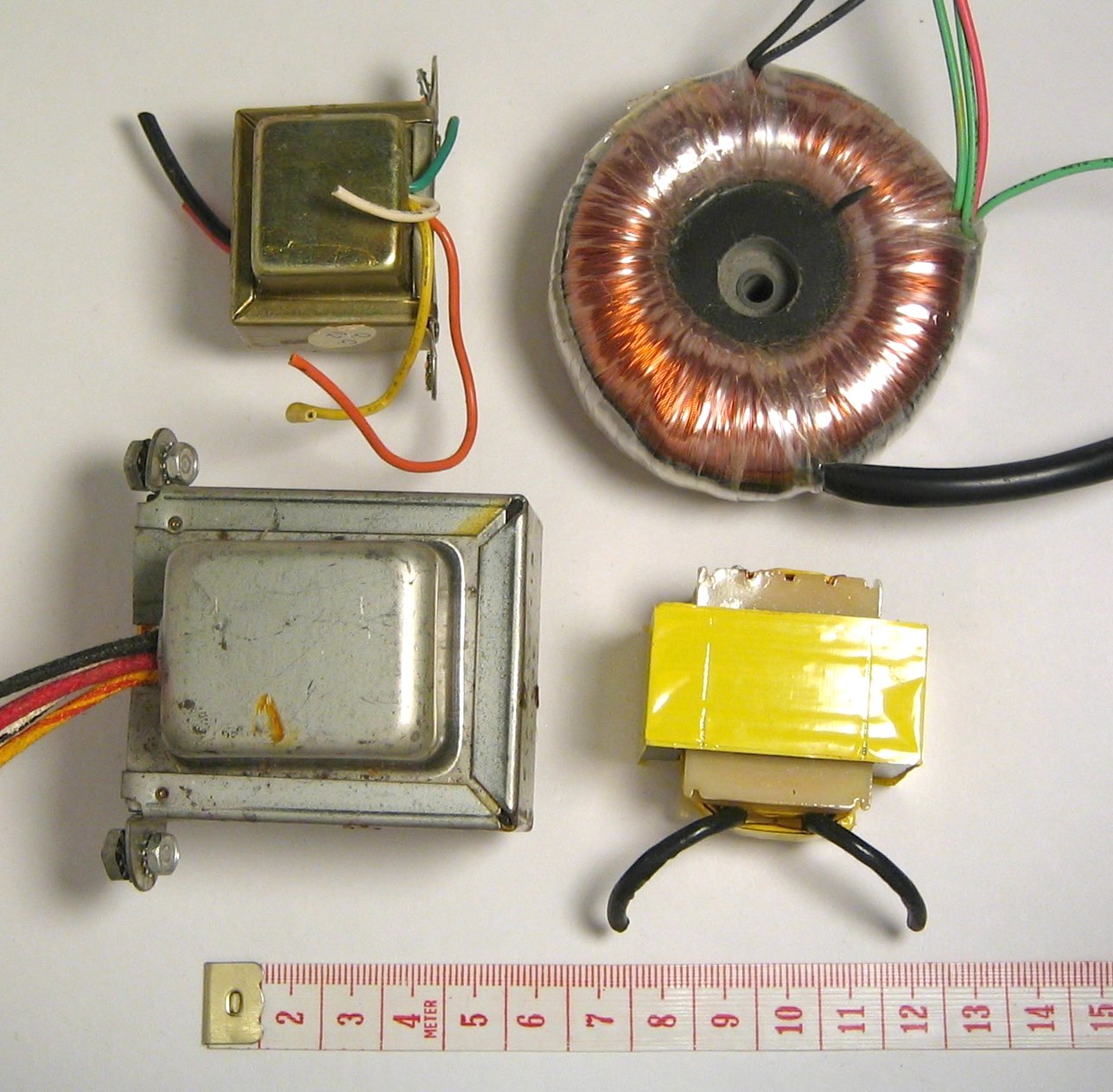Circuit Theory/Mutual Inductance
Magnetic Fields
[edit | edit source]
Inductors store energy in the form of a magnetic field. The magnetic field of an inductor actually extends outside of the inductor, and can be affected (or can affect) another inductor close by. The image above shows a magnetic field (red lines) extending around an inductor.
Mutual Inductance
[edit | edit source]
If we accidentally or purposefully put two inductors close together, we can actually transfer voltage and current from one inductor to another. This property is called Mutual Inductance. A device which utilizes mutual inductance to alter the voltage or current output is called a transformer.
The inductor that creates the magnetic field is called the primary coil, and the inductor that picks up the magnetic field is called the secondary coil. Transformers are designed to have the greatest mutual inductance possible by winding both coils on the same core. (In calculations for inductance, we need to know which materials form the path for magnetic flux. Air core coils have low inductance; Cores of iron or other magnetic materials are better 'conductors' of magnetic flux.)
The voltage that appears in the secondary is caused by the change in the shared magnetic field, each time the current through the primary changes. Thus, transformers work on A.C. power, since the voltage and current change continuously.
Ideal Transformers
[edit | edit source]Modern Inductors
[edit | edit source]
When the coils of number of turns N1 conducts current . There exists a Magnetic Field B on the coil . Changes of B will generates an Induced Voltage on the turns of coil N1 and N2 as shown
- -ξp =
- -ξs =
The ratio of -ξ2 over -ξ1
- -ξp / -ξs =
If Input voltage at coil of turn Np = -ξp and the Output voltage will be
- = -ξs / -ξp =
Thus, this device is capable of Increase, Decrease and Conduct Voltage just by changing the turn ratio of the coils
Therefore, the output voltage can be
- Increased or Step Up by increasing number of turns of coil Ns greater than Np
- Decreased or Step Down by Decreasing number of turns of coil Ns less than Np
- Buffered by setting number of turns of coil Ns equal to Np
The following photo shows several examples of the construction of inductors and transformers. At the upper right is a toroidal core type (toroid is the mathematical term for a donut shape). This shape very efficiently contains the magnetic flux, so less power (or signal) is lost to heating up the core.
Step Up and Step Down
[edit | edit source]The terms 'step-up' and 'step-down' are used to compare the secondary (output) voltage to the voltage supplied to the primary.
Many transformers are specially designed to operate exclusively as step-up or step-down. While an ideal transformer could simply be 'turned around', we find that many actual transformers are built to perform best at certain ranges of voltage and current.
For example, a power transformer may be used to step down household AC (about 120 Volts) to 24V for home heating controls, etc. The output current is higher than the primary current in this example, so the transformer is made with a heavier gauge of wire in its secondary windings.
In transformers that deal with very high voltages, special attention is paid to insulation. The windings that deal with thousands of volts must resist arcing and other problems we do not see at home.
Finally, some transformers in electronic equipment are designed for a task known as 'impedance matching', rather than for specific in/out voltages. This function is explained in literature covering audio and radio topics.
Further reading
[edit | edit source]
This section of the Circuit Theory wikibook is a stub. You can help by expanding this section.








